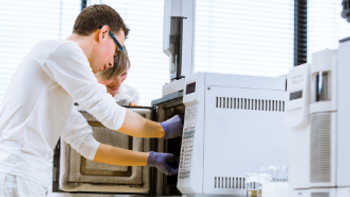Article Highlights
- The study focuses on exploring and identifying biologically active compounds present in Alaska Yellow Cedar trees, particularly their potential for preserving durability and resisting invasive species.
- Researchers utilized GC–MS alongside LLE method to improve the separation of extractive compounds compared to previous methods like SPE, addressing issues like sample loss and accuracy.
- GC–MS analysis revealed a diverse range of compounds, with carvacrol and nootkatone being prominent.
- While the study showcases effective methods for compound separation, further research, particularly utilizing GCxGC–ToF-MS, is recommended for deeper insights.
The state of Alaska is known as the final frontier. Being the largest state and one of the least densely populated states in the United States, Alaska is home to various tree and animal species that thrive in the region.
One of those tree species is the Alaska Yellow Cedar (Callitropsis nootkatensis). A tree in the cypress family native to the coastal regions of northwestern North America, the Alaska Yellow Cedar is an evergreen conifer that grows up to approximately 130 feet tall (1). It is known to contain biologically active extractive components that help preserve the tree’s durability and also fend off invasive species such as insects and microbes from damaging it (2).
A recent study conducted by the U.S. Department of Agriculture’s (USDA) Forest Service explored using gas chromatography–mass spectrometry (GC–MS) to separate biologically active extractive compounds in Alaska Yellow Cedar trees. In their experiment, the researchers sought to improve upon existing methods for extracting these compounds from trees. Previous methods, such as solid-phase extraction (SPE), possess numerous limitations that the researchers wanted to improve upon. In the case of SPE, the cartridges used were imperfect and prone to result in the loss of the sample and skew the results (2).
The research team demonstrated that liquid–liquid extraction (LLE) can help ameliorate this concern. The goal was to develop a LLE method that could reduce the size of the extractives when separated to minimize the loss of sample (2). To accomplish this task, the researchers followed the procedure established by Willfor and others (3), using acetone and hexane as the polar and nonpolar extraction solvents.
In addition, GC–MS helped identify unknown compounds in a solution (2). Fractionation was essential for the optimal performance of GC–MS to prevent peak broadening and generate more accurate results (2). Analyzing the extractives required the use of an HP 5890 Series II Plus GC instrument equipped with a HP-5 capillary column (30 m, 0.25 mm i.d., 0.25 µm film thickness) (2). The column was then heated, and the extractives were dissolved, being separated into eight vials (labeled A–H) and injected directly into the instrument (2).
The GC–MS data collected showed a wide range of identified compounds. Two of the main compounds found were carvacrol and nootkatone. In vial B, a phenol, carvacrol, was detected, which is a major compound found in aromatic plants (2). Carvacrol is often used in dermatology applications, exhibiting antiviral activity and treating various skin diseases (2,4). Nootkatone was also found in high concentrations in vial B as well as vial C. Nootkatone is a compound found in many insecticides, so its presence indicates that it plays an influential role in preserving the durability of the Alaska Yellow Cedar (5). Nootkatone also acts as an acetylecholinesterase inhibitor, making it valuable in the pharmaceutical industry when treating neurological diseases such as dementia (6,7). Apart from these two compounds, additional compounds, such as velleral, androsta-1,4,6-triene-3,17-dione (ATD), a-cadinol, and falcarinol, were also found in the vials that contained the samples.
In conclusion, the main aim of this study was to use chromatographic methods to identify all the compounds in the extractives from Alaska Yellow Cedar trees. The researchers concluded that LLE using hexane and acetone solvents was an effective method to separate the compounds in Alaska Yellow Cedar trees (2). However, the research team acknowledges that more work could be done in this field. They suggest that further investigation on vials F, G, and H using two-dimensional GC time-of-flight mass spectrometry (GCxGC–ToF-MS) can offer additional insight.
References
(1) Arno, S. F.; Hammerly, R. P. Northwest Trees: Identifying & Understanding the Region’s Native Trees. Mountaineers Books, 2020, pp 162–168.
(2) Wagner, P.; Epstein, G.; Hinkforth, B.; Mann, D.; Moore, R. K. 2023. Gas Chromatography Mass Spectrometry Analysis of Alaska Yellow-cedar Extractive Components. Research Note FPL-RN-0422; U.S. Department of Agriculture, Forest Service, Forest Products Laboratory: Madison, WI, 2023; 6 pages. https://doi.org/10.2737/FPL-RN-422.
(3) Willför, S. M.; Ahotupa, M. O.; Hemming, J. E.; et al. Antioxidant Activity of Knotwood Extractives and Phenolic Compounds of Selected Tree Species. J. Agric. Food Chem. 2003, 51 (26), 7600–7606. DOI: 10.1021/jf030445h
(4) Wang, L.; Wang, D.; Wu, X.; Xu, R.; Li, Y. Antiviral Mechanism of Carvacrol on HSV-2 Infectivity Through Inhibition of RIP3-mediated Programmed Cell Necrosis Pathway and Ubiquitin-proteasome System in BSC-1 Cells. BMC Infectious Diseases 2020, 20, 832. DOI: 10.1186/s12879-020-05556-9
(5) Schrader, J.; Bohlmann, J. Biotechnology of Isoprenoids; Berlin, Springer, 2015. DOI: 10.1007/978-3-319-20107-8
(6) Curini, M.; Cravatto, G.; Epifano, F.; Giannone, G. Chemistry and Biological Activity of Natural and Synthetic Prenyloxycoumarins. Curr. Med. Chem. 2006, 13 (2), 199–222. DOI: 10.2174/092986706775197890
(7) Colovic, M. B.; Krstic, D. Z.; Lazarevic-Pasti, T. D.; et al. Acetylcholinesterase Inhibitors: Pharmacology and Toxicology. Curr. Neuropharmacology 2013, 11 (3), 315–335. DOI: 10.2174/1570159X11311030006





